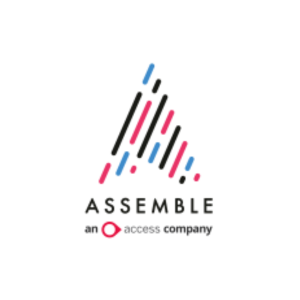Insights
INSIGHTS
All Topics
How to confront flagging staff performance
12 Oct 2022by Christine Chiu
Avoid the awkwardness and address underperformance with our tips
Despite the best of intentions, sometimes teams don’t live up to the mark. For charity digital leaders, it’s particularly awkward, as one of the top reasons that people join the sector is because they want to do good.
CharityJobs echo that statement. They suggest that the top two reasons that people join charities as staff members is because, first, they get to make a real difference. That sense of purpose keeps colleagues motivated and often leaves teams with a deep sense of satisfaction. The second is the close connection with others.
The recruitment site describes working in the sector as such: “Not only will you meet a really broad range of people from different backgrounds and with interesting life experiences, but you’re also likely to have similar beliefs and motivations in supporting a cause and wanting to make a difference.”
When it comes to addressing performance issues managers do have a tricky task. But, with some tact and sensitivity, it doesn’t have to get any more serious than a conversation.
Make sense of what you’re seeing
When you’re witnessing underperformance make sure you have evidence. Hiscox, the insurer, describe the best way to prepare: “Be ready to explain specifically, and clearly, to that person what the gap is between what you expect to see and what you currently see.”
The last thing managers want is to not be able to point to specific instances or examples.
Use digital to get more information
Digital productivity tools are great for both staff and management. They typically come with reporting information available to administrators.
Microsoft Teams, one of the most widely used platforms across the charitable sector, includes administrative downloads. From there, managers can determine the level of activity and engagement.
Other collaboration tools like Asana offer assignments and workflow checkpoints. From this perspective, it’s easy to determine who’s done what and how quickly.
Summarise your expectations
The abovementioned Hiscox leads into this point. Make sure that when dealing with unsatisfactory performance that you set the bar.
Arm yourself for the conversation with metrics and examples of where you see good performance and success. Avoid naming names or comparison with other staff members.
Listen, don’t judge
The first rule of thumb when dealing with under- or non-performing employees is to listen before casting any judgement.
GluRecruit says that when listening, bear in mind that the aim of the discussion is to find a solution and not blame: “A good method is to ask the underperforming employee how you can support them to perform better. This approach may allow them to discuss what they think they need.”
Together, develop a plan
Once you’ve understood what the problem is, devise a plan to work together. This can include KPIs, weekly check-ins, or working in teams. The NCVO says to use SMART objectives as part of your goal setting strategy. The plan should also include action points on how staff can improve performance.
The other aspect to consider are regular appraisals. These one-to-one meetings review what’s been done, and what the next steps are in the short term. To be effective, plan them at regular, known intervals so that staff are aware of when they are evaluated.
But don’t rely on digital alone
Hybrid working can be both a boon and curse. With digital tools, progress can be monitored through project management platforms, clocks, or simply with videoconferencing. However, in-person information yields a lot more clues.
The Harvard Business Review says to make it obvious to staff how they should update management. They also underscore the challenge: “Don’t rely only on video meetings, where the lack of true eye contact can make it seem like you’re getting nonverbal clues when you’re not.”
Informal mentorship can steer the course
Partnerships between high achievers and those struggling bears fruit. The Association for Talent Development notes that this type of environment lets workers know that they are valued, and, that the charity has an interest in seeing them succeed. This reduces turnover and improves performance.
Retention is also important
Remember that everyone has peaks and troughs when it comes to productivity and achievements. Talented people managers use retention programs to motivate staff to do better. Don’t forget to also highlight opportunities for those who do succeed.
To keep staff onboard during the Great Resignation, remind them why they joined in the first place. At Charity Digital we think: “It’s worth making the effort to reinforce how individual roles fit into the bigger picture – for example, in team meetings or performance reviews. Because having work that is purposeful doesn’t only boost motivation and morale, it can lead to better health, greater resilience, higher engagement, and more achievement.”
Christine Chiu
More on this topic
Recommended Products
19 Dec 2024by Christine Chiu
How to recruit digital volunteers
10 Dec 2024by Laura Stanley
How to revisit your charity’s storySponsored Article
06 Dec 2024by Ioan Marc Jones
How charities stopped centring service users
Our Events
Charity Digital Academy
Our courses aim, in just three hours, to enhance soft skills and hard skills, boost your knowledge of finance and artificial intelligence, and supercharge your digital capabilities. Check out some of the incredible options by clicking here.




















